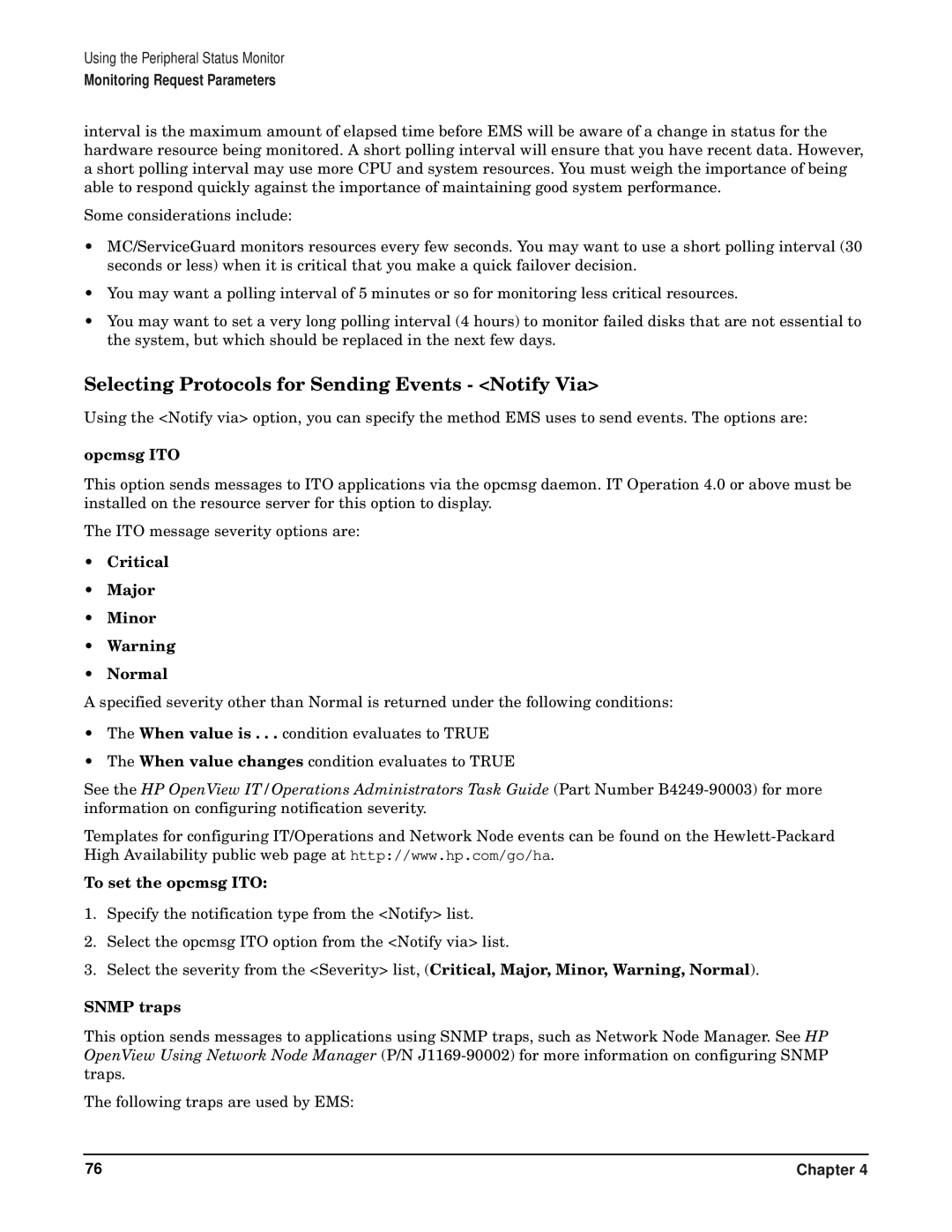Using the Peripheral Status Monitor
Monitoring Request Parameters
interval is the maximum amount of elapsed time before EMS will be aware of a change in status for the hardware resource being monitored. A short polling interval will ensure that you have recent data. However, a short polling interval may use more CPU and system resources. You must weigh the importance of being able to respond quickly against the importance of maintaining good system performance.
Some considerations include:
•MC/ServiceGuard monitors resources every few seconds. You may want to use a short polling interval (30 seconds or less) when it is critical that you make a quick failover decision.
•You may want a polling interval of 5 minutes or so for monitoring less critical resources.
•You may want to set a very long polling interval (4 hours) to monitor failed disks that are not essential to the system, but which should be replaced in the next few days.
Selecting Protocols for Sending Events - <Notify Via>
Using the <Notify via> option, you can specify the method EMS uses to send events. The options are:
opcmsg ITO
This option sends messages to ITO applications via the opcmsg daemon. IT Operation 4.0 or above must be installed on the resource server for this option to display.
The ITO message severity options are:
•Critical
•Major
•Minor
•Warning
•Normal
A specified severity other than Normal is returned under the following conditions:
•The When value is . . . condition evaluates to TRUE
•The When value changes condition evaluates to TRUE
See the HP OpenView IT/Operations Administrators Task Guide (Part Number
Templates for configuring IT/Operations and Network Node events can be found on the
To set the opcmsg ITO:
1.Specify the notification type from the <Notify> list.
2.Select the opcmsg ITO option from the <Notify via> list.
3.Select the severity from the <Severity> list, (Critical, Major, Minor, Warning, Normal).
SNMP traps
This option sends messages to applications using SNMP traps, such as Network Node Manager. See HP OpenView Using Network Node Manager (P/N
The following traps are used by EMS:
76 | Chapter 4 |
